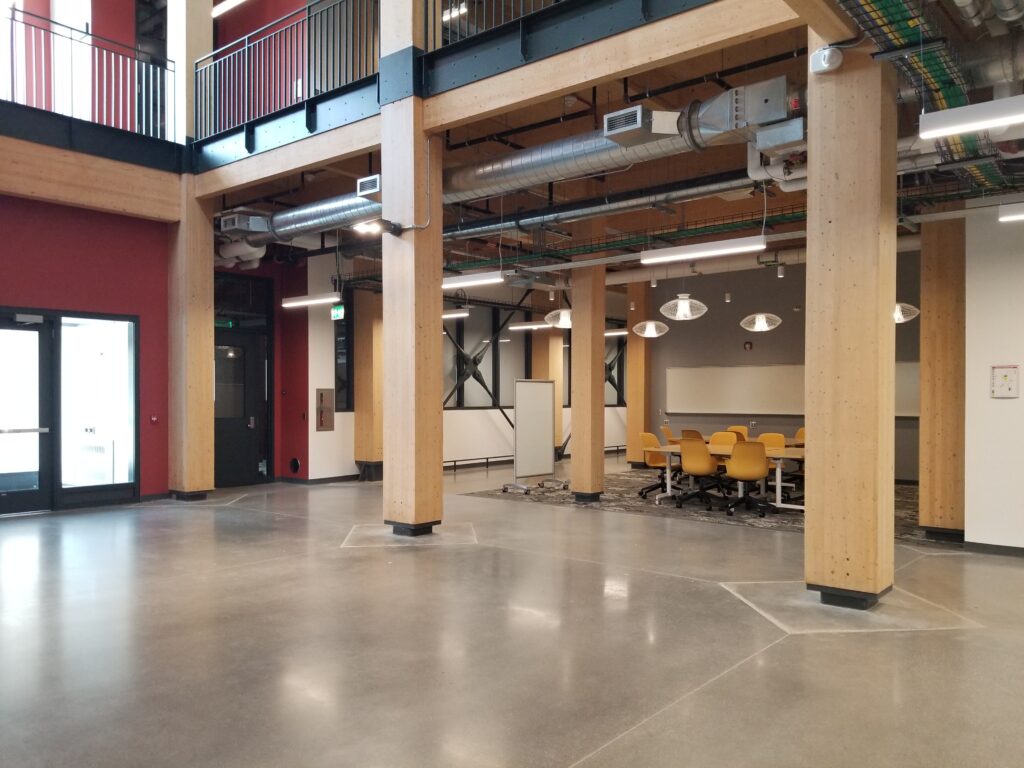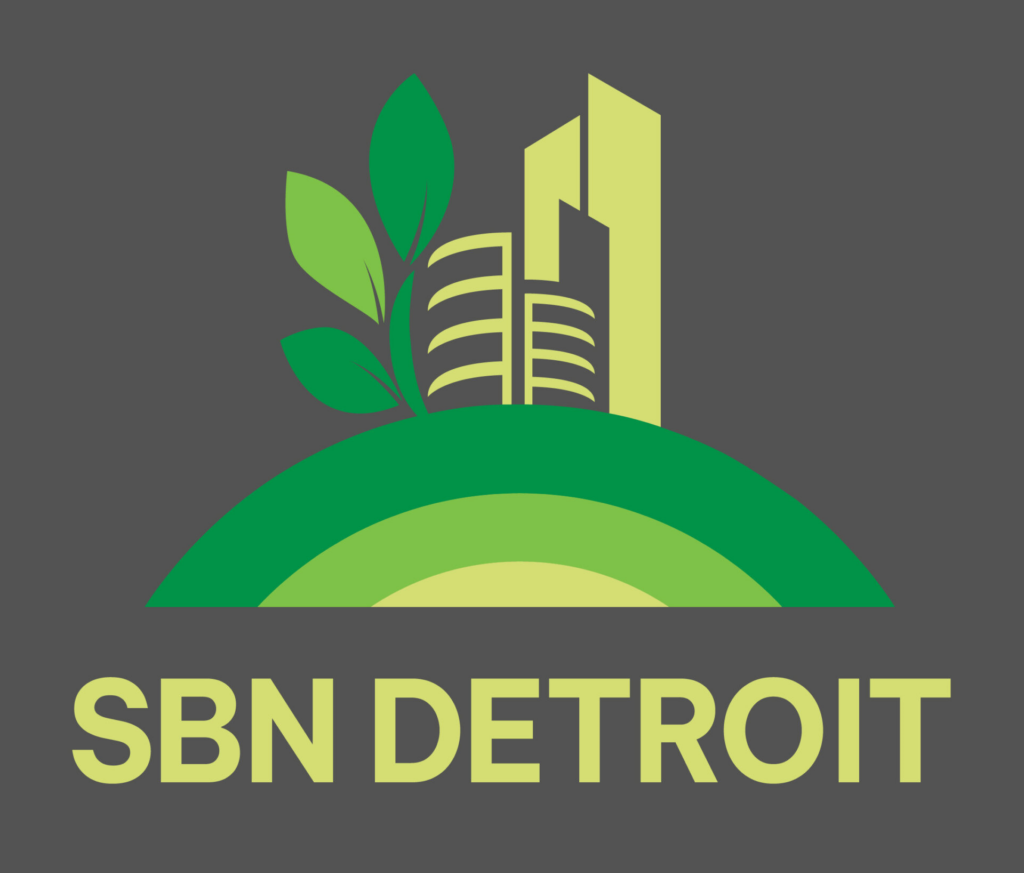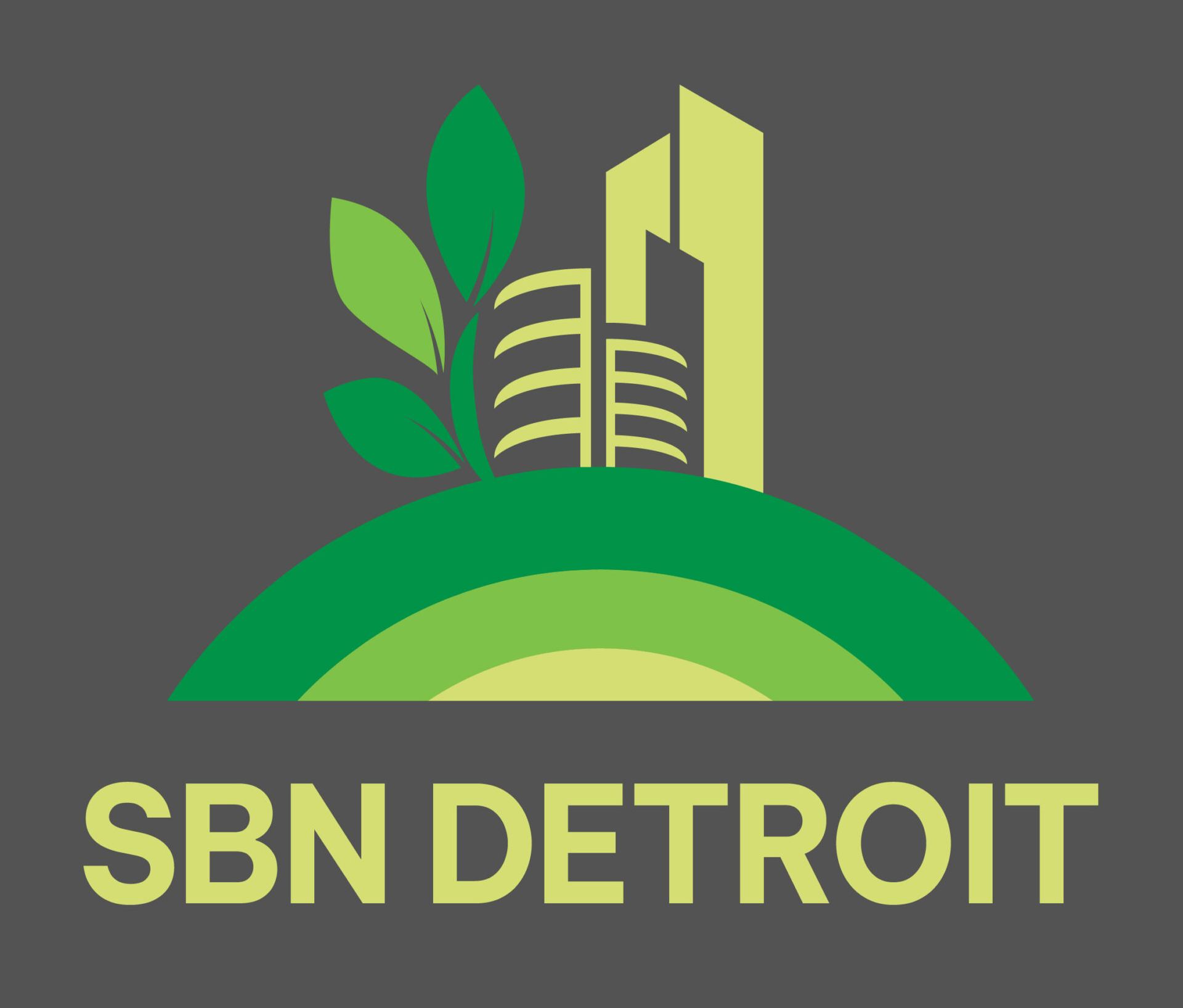Building with Purpose

MassTimber@MSU is a cross-disciplinary initiative at Michigan State University dedicated to advancing mass timber construction and manufacturing in Michigan. Collaborating with partners across construction, forestry, development, and state agencies—including the Michigan Department of Natural Resources—the initiative leverages MSU’s land-grant mission through research, teaching, stakeholder engagement, and policy development to build a sustainable mass timber future for the state. SBN Detroit interviewed Sandra Lupien, Director of MassTimber@MSU, about the environmental, economic, and design implications of mass timber and the growing momentum behind the material in Michigan and beyond. Q: What is the MassTimber@MSU initiative, and what inspired its creation? A: MassTimber@MSU is a collaboration across MSU’s School of Planning, Design and Construction, Department of Forestry, and MSU Extension. We work with partners across the state—including construction professionals, foresters, community and development organizations, and state agencies like the Michigan Department of Natural Resources—to advance mass timber construction and manufacturing in Michigan. Our approach reflects MSU’s land-grant mission: research, teaching and curriculum development, stakeholder engagement, and policy exploration that could support mass timber adoption. Since I started in this role in July 2021, momentum is growing. There are now more than 65 mass timber projects in the pipeline in Michigan. The STEM Teaching and Learning Facility on MSU’s campus, which is the second building in the state to use cross-laminated timber (CLT), helped demonstrate what’s possible. And we’re now seeing serious interest from prospective producers who are looking to locate in Michigan. Q: What are the environmental benefits of mass timber in terms of sustainability, carbon reduction, and climate resilience? A: This is exactly what drew me to mass timber. It’s a tool in our toolkit to reduce carbon emissions, support sustainable communities, and help foster healthier, more resilient forests. Globally, the built environment accounts for about 39% of greenhouse gas emissions—28% from building operations and 11% from construction materials like concrete, steel, and glass. These materials are essential, but they’re energy-intensive to produce. Wood, by contrast, is a renewable resource that stores carbon. When we use wood in construction, we’re not only lowering a building’s embodied carbon footprint—we’re also locking that carbon into the structure itself. At MSU, the STEM Teaching and Learning Facility contains roughly 3,000 cubic meters of mass timber, which stores about 1,856 metric tons of carbon dioxide equivalent. That’s comparable to removing the emissions from 4 million miles driven by an average car. Mass timber buildings, in this way, become carbon storage banks. On the forestry side, we know that many forests evolved with low-intensity natural fires that helped maintain healthy densities. Today, many of our forests are overcrowded, which makes them vulnerable to pests, disease, and catastrophic wildfire. Because of past logging practices and fire suppression, we have an obligation—and opportunity—to steward forests more sustainably. When we do that, we can produce wood that extends the climate benefits of trees, especially if that wood would otherwise decay or burn. Q: How are MSU students and faculty engaging with mass timber—from design to research to real-world application? A: There are three main academic areas deeply engaged with mass timber: Construction Management, Forestry and Biochemistry, and Civil and Environmental Engineering. We have undergraduates, master’s students, and Ph.D. candidates working with faculty on projects across those disciplines. In Construction Management, Professor George Berghorn is developing mass timber curriculum modules that can be used nationally in engineering and construction programs. In Forestry, Professor Mojgan Nejad is doing incredible work on developing bio-based adhesives and coatings for use in mass timber—replacing fossil-fuel-based polyurethane with lignin-based alternatives. She’s actively working toward commercialization. We’ve also done economic research to analyze supply chains and survey demand, which helps inform developers and policymakers. And beginning Spring 2025, we launched a new course focused entirely on mass timber, led by Dr. George Berghorn and tailored for both undergraduate and graduate students. Q: From an economic perspective, how could mass timber help revitalize Michigan’s forestry sector and rural economies? A: We’ve modeled the economic impacts of launching a 50,000-cubic-meter-per-year mass timber manufacturing facility in Michigan. The results are exciting: such a facility would contribute $152 million to the state’s GDP and support 318 jobs. There’s a strong need to find new uses for Michigan wood. With the paper industry in decline and other traditional markets shifting, mass timber presents an opportunity to create high-value products that support Michigan jobs and rural economies. Q: How does the initiative align with Michigan’s climate goals or sustainable development strategies statewide? A: The MI Healthy Climate Plan, which outlines the state’s climate goals, directly mentions mass timber three times—as a key strategy for reducing emissions in the built environment and managing natural lands sustainably. The City of Lansing’s Sustainability Action Plan also highlights mass timber, and East Lansing has even amended its zoning ordinance to incentivize developers to use mass timber and build LEED-certified projects. It’s encouraging to see this kind of policy support—it sends a signal that mass timber can and should be part of Michigan’s climate solution. Q: What does Michigan’s existing forest resource look like, and how does sustainable forestry tie into your vision? A: Healthy, resilient forests are the foundation of everything we do. In Michigan, about 70% of our forest resource is hardwood and 30% is softwood. Most mass timber products currently certified for use in the U.S. are made from softwoods. That said, Michigan does have suitable softwood species. For example, red pine was certified for structural use because the Michigan DNR prioritized using Michigan wood in a customer service building in the Upper Peninsula. That’s a great example of state leadership driving local wood utilization. As the industry evolves, there’s potential to expand the species we can use in mass timber production. Q: Looking ahead five to ten years, what’s your boldest vision for the impact of the Mass Timber Initiative? A: I’d like to see commercial buildings—everything from multifamily housing to community centers to industrial facilities—considering mass timber from the outset, not as a novelty but as a viable, mainstream option. Mass timber
Aligning Business with Sustainability

Comerica Inc. was founded in Detroit in 1849 and remains rooted in Southeast Michigan, even as its headquarters now sit in Dallas. With 4,300 employees in the region and a strong presence across the state, the bank continues to play an active role in environmental responsibility and community impact. SBN Detroit interviewed Scott Beckerman, Senior Vice President and Director of Corporate Sustainability, about the bank’s climate strategy, operational footprint, and the role financial institutions play in driving sustainable progress. Q: Comerica has deep roots in Detroit, even as its headquarters are now in Dallas. How does that legacy influence the bank’s sustainability priorities in Southeast Michigan and beyond? A: Comerica is really proud of our 175-year legacy in Detroit, and over half of our employees are here. As a lifelong resident of the Detroit area myself, I recognize the unique environment of this region. So naturally, there is a certain connection to our desire to protect and preserve this special environment. But we also know that environmental issues aren’t just local – they are global in their nature. I think the connection here is that we understand the importance of issues in the near-term and at the local scale but also recognize the importance of the global scale. For issues like climate change, that means our future success depends on the actions we are taking today, both here in the Detroit area and across the country. Q: What are the most pressing environmental or climate-related risks Comerica is working to address within its operations and client services? A: Our commitment is around three main areas: Reducing our own environmental footprint, embedding sustainability into our business, and supporting our customers’ needs. For our own footprint, we are focused on reducing water consumption, waste generation, resource consumption, and greenhouse gas emissions. Since 2012, we’ve reduced our GHG emissions 61%, – on our way to a 65% reduction target by 2030 and moving toward our north star of 100% reduction by 2050. For water, we’ve decreased our consumption by 48% and have also seen a 41% reduction in waste. On the resource consumption side, our focus is paper usage and since 2012 we’ve decreased that by 89%. For our customers, we want to ensure they have access to the financial products and services they need to address the challenges they face. Maybe for a homeowner, that is a home equity loan to make their home more energy efficient or add solar to their roof. For a business, that may mean providing the financing to upgrade the efficiency of their equipment or capital improvements to a building to make it more climate resilient. Q: Comerica has made commitments to reduce operational emissions and increase energy efficiency. Can you walk us through the key strategies being used to reach those goals — and how success is measured? A: Our primary drive has been a focus on energy efficiency. With roughly 400 buildings in our portfolio, this is no easy task, and no two buildings are alike. We’ve deployed a host of efficiency measures from lighting to advanced building controls to really working on driving down energy consumption, which is the largest contributor to our greenhouse gas emissions. The other important thing is to right-size our real estate footprint while still serving our customer needs. A lot has changed with the digitalization of banking, and we simply don’t need the same amount of space that we needed in the past. So being smart about the amount of real estate we occupy has also helped us drive down our overall energy consumption. At the same time, we recognize that the shift to a digital world is not without its own set of issues, including GHG emissions, so we work with providers to ensure the majority of our technology and data center needs are powered by renewable energy. We’re also investing in renewable energy solutions across our footprint, focused on local impacts, including piloting solar projects and REC (renewable energy certificate)-backed electricity programs in Michigan and Texas. Q: What role does Comerica’s sustainability team play in engaging business units across such a large organization? How do you ensure consistency in implementation? A: First, we center our sustainability program on value creation. What I mean by that is that our sustainability initiatives need to be generating value by reducing risks or costs, spurring innovation, and supporting revenue growth. If we do all that well, it enhances our reputation and brand which delivers additional value. While it may be cliché, I think it’s true that sustainability really is the ultimate team sport. We are successful with our programs because we have the buy-in and support from colleagues across our organization. We also support sustainability through colleague education, regional Green Teams, and volunteer-driven community programs. Q: In your view, what’s the biggest challenge for banks — especially legacy institutions like Comerica — when it comes to embedding sustainability into the core business model? A: For any business, there are a ton of ever-evolving business priorities, based on things like the market, customer needs, regulatory requirements, and changing technology. So, if you approach sustainability as an add-on to the traditional business priorities, then it can get pushed aside by pressing traditional business needs of the moment. But if you embed sustainability into your core values and it becomes a part of how you do business, then it becomes a long-term source of business stability. At Comerica, we have a core value of being “A Force For Good,” which means we’ve worked to embed sustainability into how we do business. Since the establishment of our sustainability office in 2008, that means we’ve significantly reduced our environmental footprint and delivered tens of millions of dollars of cost savings. Q: Where do you see the greatest opportunity for Comerica to lead — whether through lending practices, investments, community partnerships, or internal operations? A: Our length of time in this space has given us a real advantage in terms of long-term impacts. During that time,


